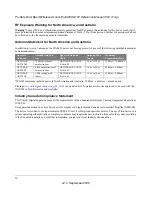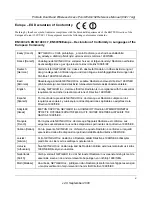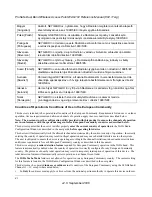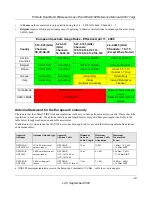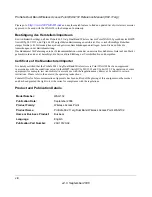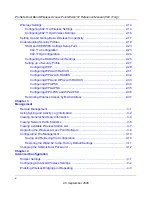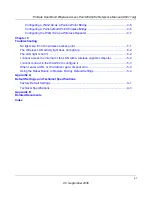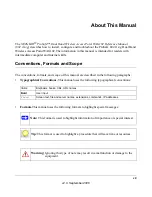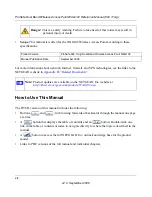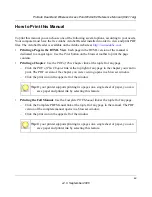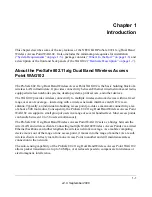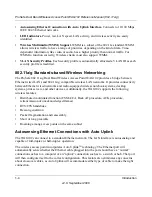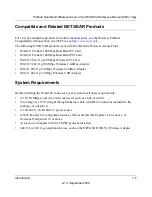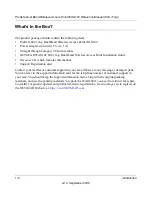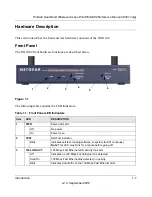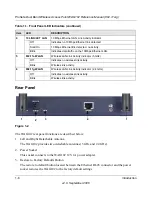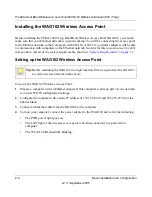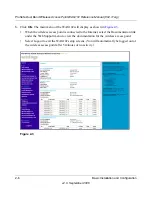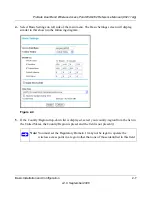
ProSafe Dual Band Wireless Access Point WAG102 Reference Manual (802.11a/g)
1-2
Introduction
v2.0, September 2006
Key Features and Standards
The WAG102 Wireless Access Point is easy-to-use and provides solid wireless and networking
support. It also offers a wide range of security options.
Supported Standards and Conventions
The following standards and conventions are supported:
•
Standards Compliant.
The Wireless Access Point complies with the IEEE 802.11a/g for
Wireless LANs.
•
WEP support.
Support for WEP is included. 64-bit, 128-bit, and 152-bit keys are supported.
•
Full WPA and WPA2 support.
WPA and WPA2 enterprise-class strong security with
RADIUS and certificate authentication as well as dynamic encryption key generation.WPA-
PSK and WPA2-PSK preshared key authentication without the overhead of RADIUS servers
but with all of the strong security of WPA.
•
Multiple BSSIDs.
Supports multiple BSSIDs. When one wireless access point is connected to
a wired network and a set of wireless stations, it is called a Basic Service Set (BSS). The Basic
Service Set Identifier (BSSID) is a unique identifier attached to the header of packets sent over
a WLAN that differentiates one WLAN from another when a mobile device tries to connect to
the network.
•
DHCP Client Support.
DHCP provides a dynamic IP address to PCs and other devices upon
request. The WAG102 can act as a client and obtain information from your DHPC server; it
can also act as a DHCP server and provide network information for wireless clients.
•
SNMP Support.
Support for Simple Network Management Protocol (SNMP) Management
Information Base (MIB) management.
•
802.1Q VLAN (Virtual Wireless LAN) Support.
A network of computers that behave as if
they are connected to the same network even though they actually may be physically located
on different segments of a LAN. VLANs are configured through software rather than
hardware, which makes them extremely flexible. VLANs are very useful for user/host
management, bandwidth allocation and resource optimization.

